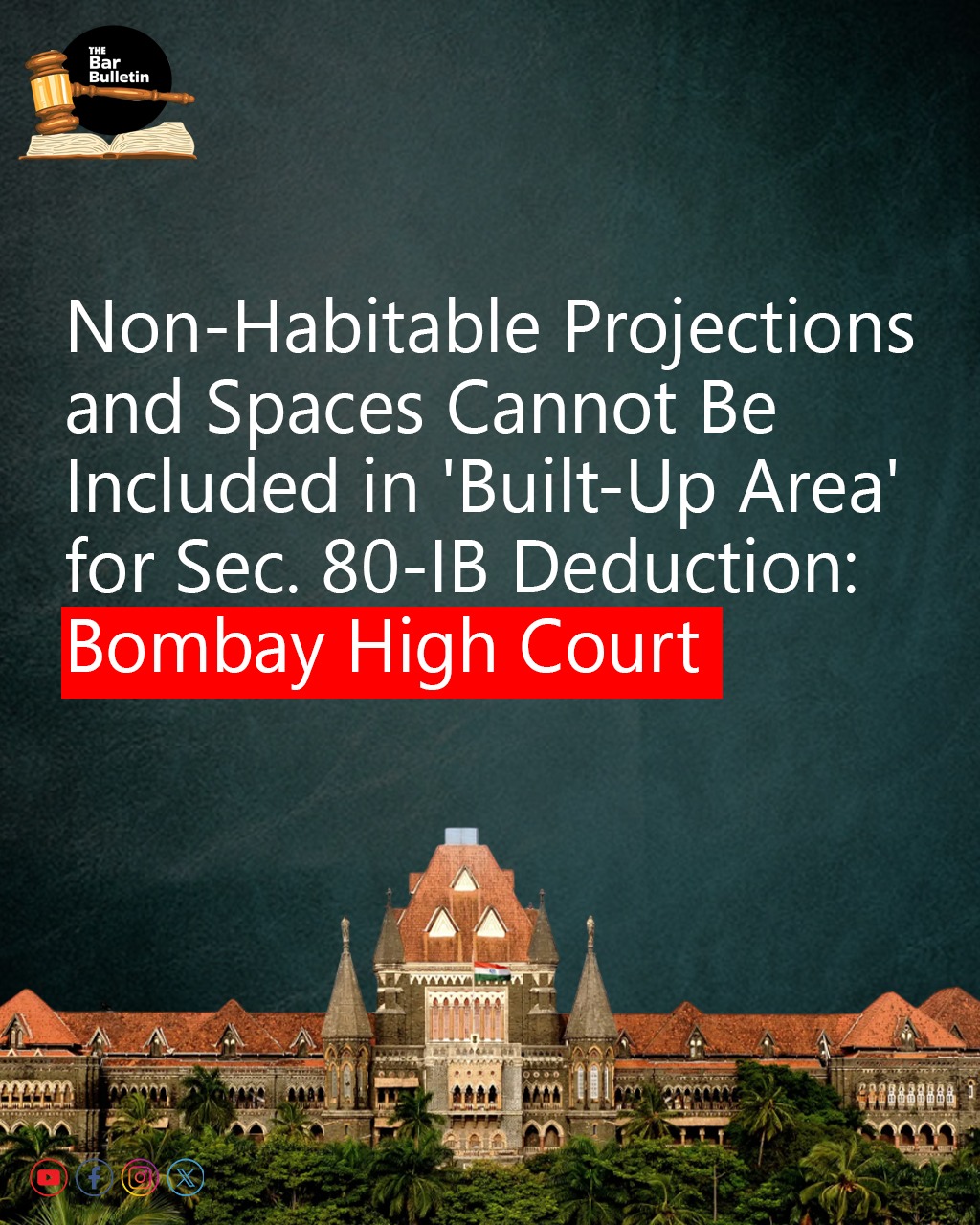The Bombay High Court recently upheld the concurrent findings of the Appellate Revenue Authorities as well as the Tribunal, that the cupboard projections, the service area, and the window projections cannot be included in the ‘built-up’ area for the purpose of calculating the eligible limit of 1000 sq.ft. to allow the deduction under Section 80IB(10) of the Income Tax Act.
The Division Bench of Justice B. P. Colabawalla and Justice Firdosh P. Pooniwalla observed that window projections cannot be included in the “built up area” as defined in Section 80IB(14)(a), as they are situated above the floor level, and being an elevated feature, it has nothing to do with the carpet area of the flat. The Bench clarified that sill of the window, which was allegedly extended, may be used for protection from sunlight and rain and hence, it cannot be presumed by the Income Tax Department that the builder has sold this area to the flat owners.
As far as the flower bed area is concerned, the Bench concurred with the ITAT that the same is below the floor level of the residential unit, the same is excluded for FSI calculations as per the Development Control Regulations, and it is outside the residential unit, since it starts where the balcony ends. The “built-up area” is defined u/s 80IB(14)(a) as the inner measurements of the residential unit at the floor level, including projections and balconies, as increased by the thickness of the walls, but does not include the common areas shared with other residential units.
Since the flower bed area is admittedly outside the residential units and a few inches below the floor level, it is open to the sky and not covered from either the top or from the three sides, and most importantly, it is not habitable/ capable of being effectively used by the flat purchaser, the Bench observed that the flower bed area cannot fall within the definition of the words “built up area” as appearing u/s 80IB(14)(a).
As far as cupboard projections are concerned, the Bench questioned as to how it can be included in the “built up area” when it is already included in the wall area itself. Similarly, as far as the service area is concerned, the Court clarified that the same is a common area which runs throughout the building for the purpose of laying pipes, and not habitable by the flat purchaser.
In this case, the Respondent, before its dissolution and being taken over by the company, i.e., Nahar Builders in the year 2011, had claimed a deduction u/s 80IB(10) in respect of 19 different residential complexes constructed by it. Later, a search and survey action was carried out in the year 2012, in the name of the erstwhile company, i.e., the Respondent, which was not in existence and had already stood dissolved. On being informed of this lapse, the AO neglected this as a procedural fault and proceeded to deny the deductions u/s 80IB(10). The CIT(A), though, sustained the validity of the assessment passed u/s 153A, but directed the AO to exclude the service area, window area, window projections, and cupboard projections from the definition of the words “built up area” for calculating the eligible limit of 1000 sq. ft to allow deduction u/s 80IB(10).
When the matter reached the ITAT, the assessment was declared illegal, based on the fact that a search warrant was issued in the name of a non-existent entity. As far as the inclusion of cupboard projections, service area, and window projections was concerned, the ITAT confirmed the order of the CIT(A). The ITAT also held that the flower bed area could not be included in the definition of the words “built-up area” while calculating the eligible limit of 1000 sq. ft. to allow the deduction u/s 80IB(10).
Finally, the matter reached the High Court, whereby the findings drawn by the CIT(A) as well as the ITAT stands confirmed and answered in favour of the respondent, and hence, the issue regarding validity of assessment passed in the name of non-existent entity, has been rendered academic.
Appearances:
Advocate Suresh Kumar, for the Appellant
Senior Advocate J.D. Mistri, a/w Advocates Asifa Khan, Parimal K. Shroff, D.V. Deokar, and Sachin Pandey, for the Respondent
![]()
Principal CIT vs Nahar Enterprises Preview PDF

